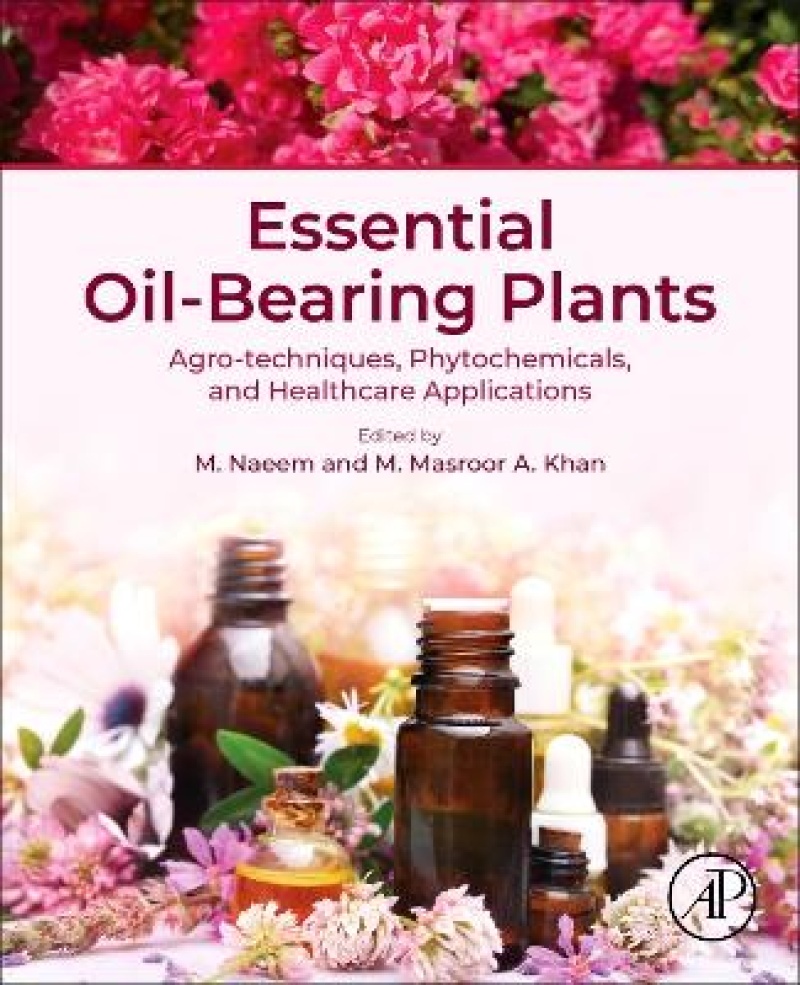Essential Oil Bearing Plants: Agro-techniques, Phytochemicals, and Healthcare Applications provides a unique, comprehensive view of the plants which produce these valuable products, exploring optimal plant production. Environmental factors such as genetic factors, geographical origins, cultivation locations, environmental conditions, and nutritional status influence their secondary components. Moreover, water variability, temperature, salt, and metal stresses significantly impact the growth, yield, and EO production of these plants by adjustment of anatomical, morphological, and biochemical development.
This compilation increases the awareness of the essential oil plant species, their conservation, cultivation, and sustainable utilization. This deeper understanding of current science will aid in the efficient commercialization of products based on these plants, and will help identify knowledge gaps for future research.
Les mer
Section I – Overview of the Essential Oil-Bearing Plants
1. Current status and future applications of the essential oil
2. Sources, bioactivities and industrial importance of aromatic compounds
3. Impact of abiotic stress factors on essential oil-yielding plants: Adaptation and strategies to overcome unpredictable situations- An Overview
Section II – Agricultural Practices for the Cultivation and Production of Essential Oil Plants
4. Cultivation of aromatic & medicinal plants using standard techniques
5. Effect of organic fertilizers on physiological traits of some medicinal plants
6. Peppermint (Mentha piperita L.): A menthol-producing crop
7. Harvesting and post-harvest processing of medicinal and aromatic plants
8. Agro-techniques of potential aromatic grasses in India
9. Overexploitation and conservation strategies for medicinal and aromatic plants
10. Plant essential oils production under abiotic stress factors
11. In vitro anticancer and antibacterial activities of Forsskal's basil under extreme environmental conditions
Section III - Chemical Composition and Extraction of Phytochemicals
12. Composition and characterization of phytochemicals in aromatic species of Lamiaceae family
13. Chemical composition of essential oil in citrus species
14. Natural plant compounds with diverse and multiple aromas, odors and colors
15. Polyphenols and their biological applications
16. Extraction and characterization of essential oils in aromatic plant species
17. Implementation of novel distillation technology for essential oil extraction
Section IV - Physiological, Biotechnological and Molecular Approaches
18. In silico molecular docking and in (vivo/vitro) studies of bioactive compounds of essential oil plant
19. Biotechnological approaches for valuable aromatic plants
20. Stress tolerance and molecular mechanisms in essential oil plants
21. Study on genetic diversity of medicinal plants
Section V - Applications in Healthcare and Food Industry
22. Applications of essential oil-bearing plants in healthcare
23. Biotechnological production of anticancerous compounds
24. Secondary metabolites, pharmacological activities and commercialization of basil products: major concerns regarding their legislation and approvals
25. Antimicrobial activity of Hypericum scabrum essential oil
26. Therapeutic potential of Eucalyptus plant species
27. Genus Mentha: Volatile oil composition and applications in healthcare
28. Myrtus communis L. from antiquity to today: Ethnopharmacological uses, phytochemical content and pharmacological effects
29. Use of essential oils as additives in active food packaging
30. Essential oil applications in the food industry
31. Conclusions and future prospects
Les mer
Helps readers understand the sources of essential oils, their chemistry, and their applications for consumer benefit
Presents insights from botany, agronomy, agriculture science, medicinal chemistry, biotechnology, molecular biology, and pharmacology
Highlights agricultural practices for the cultivation and production of essential Oil-bearing plants
Includes therapeutic properties and other medicinal applications
Explores chemical composition and the extraction of phytochemicals
Addresses the latest physiological, biotechnological, and molecular approaches
Les mer
Produktdetaljer
ISBN
9780443248603
Publisert
2025-05-30
Utgiver
Vendor
Academic Press Inc
Vekt
450 gr
Høyde
276 mm
Bredde
216 mm
Aldersnivå
P, 06
Språk
Product language
Engelsk
Format
Product format
Heftet
Antall sider
406
